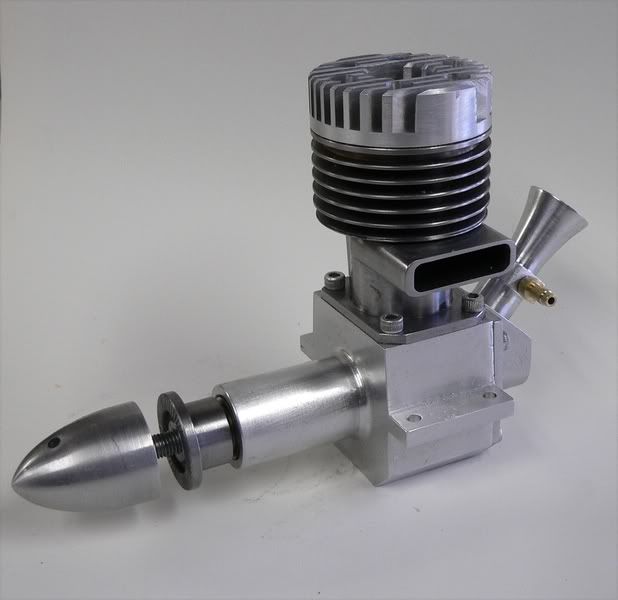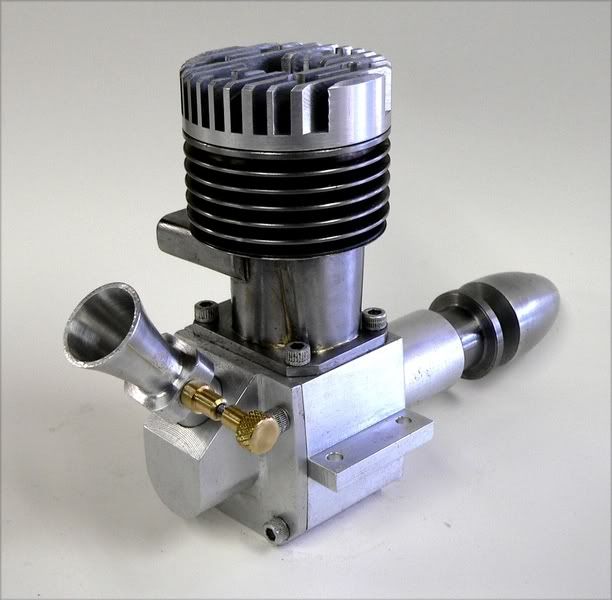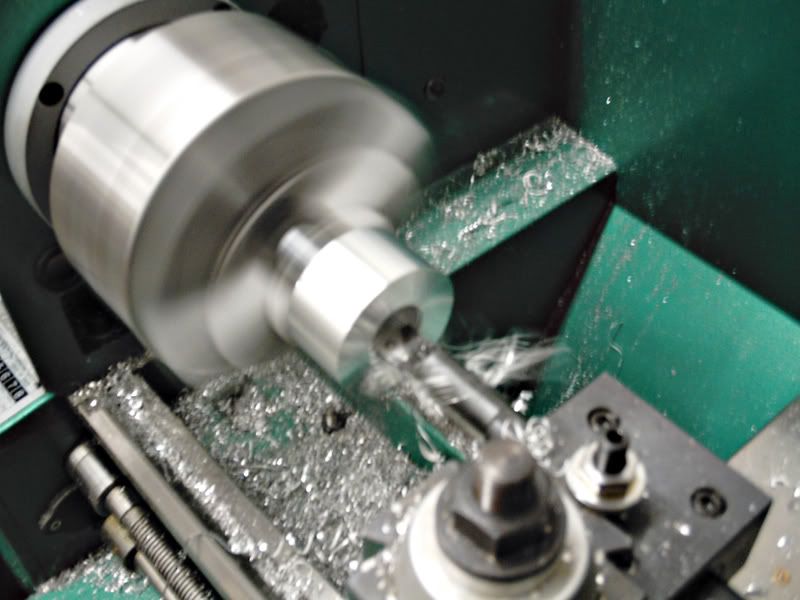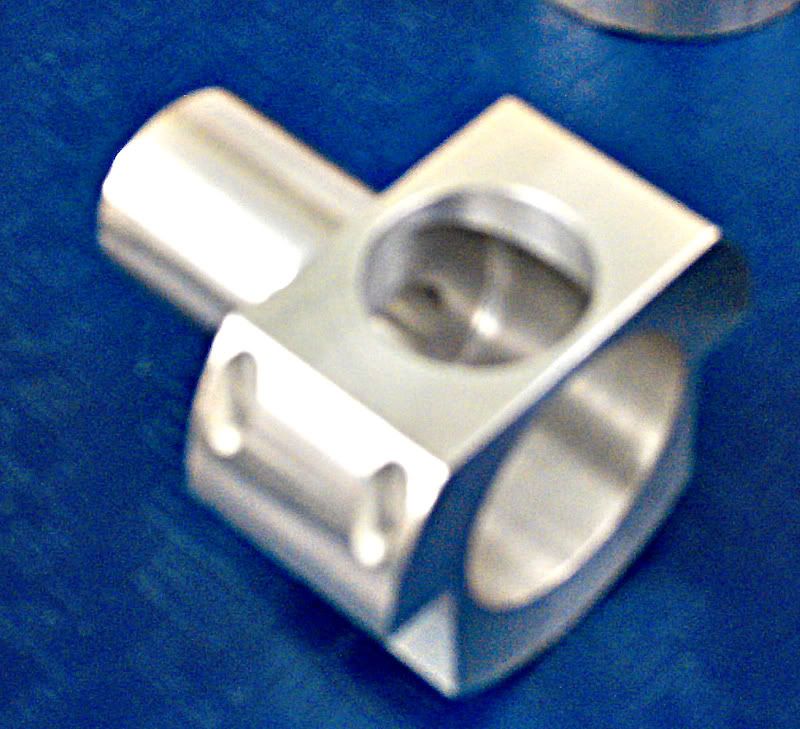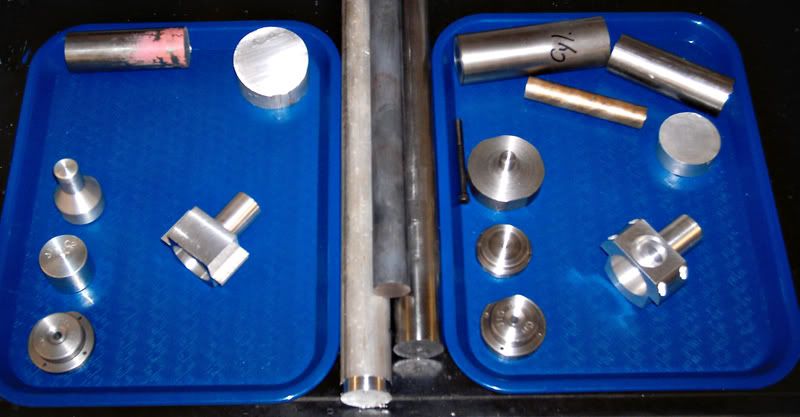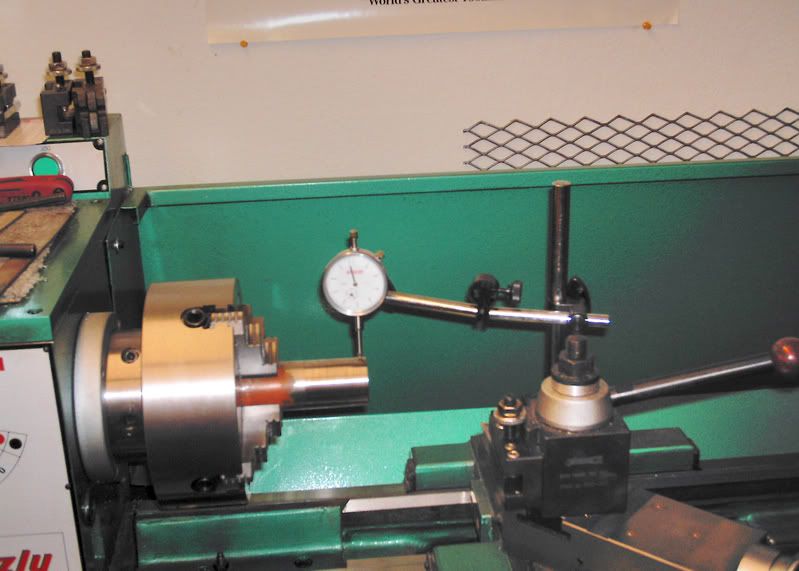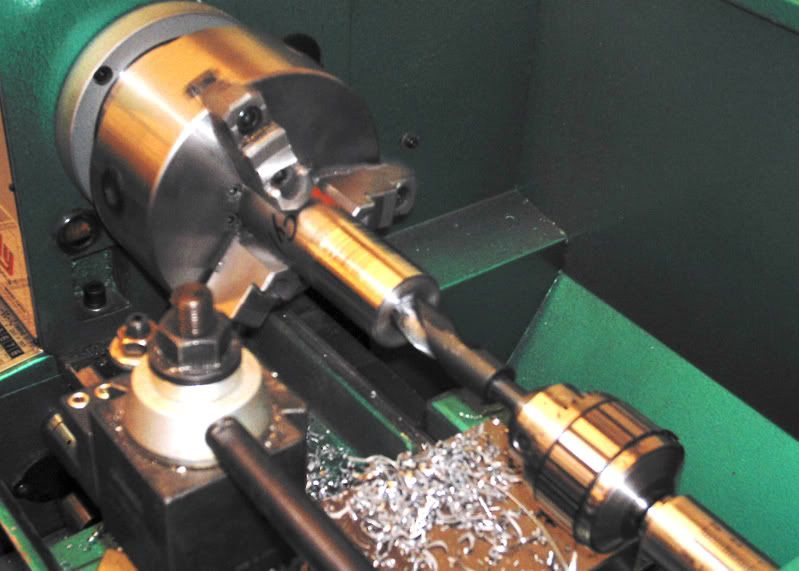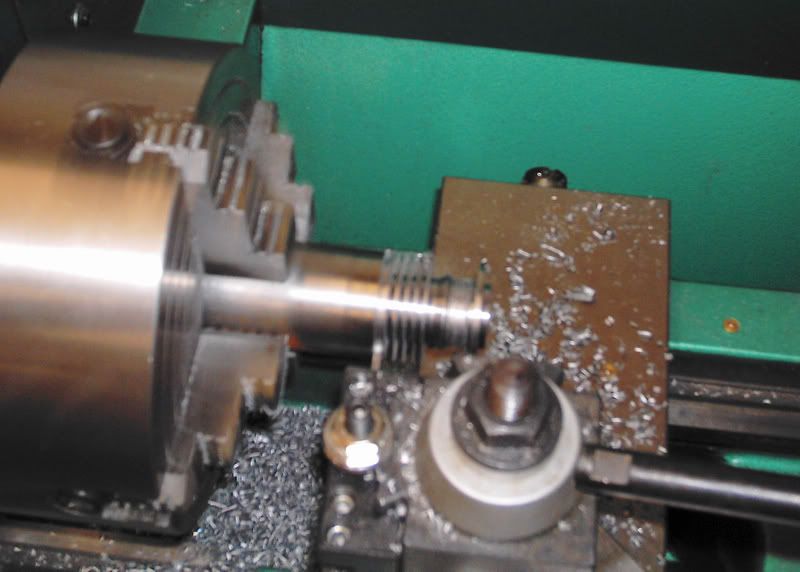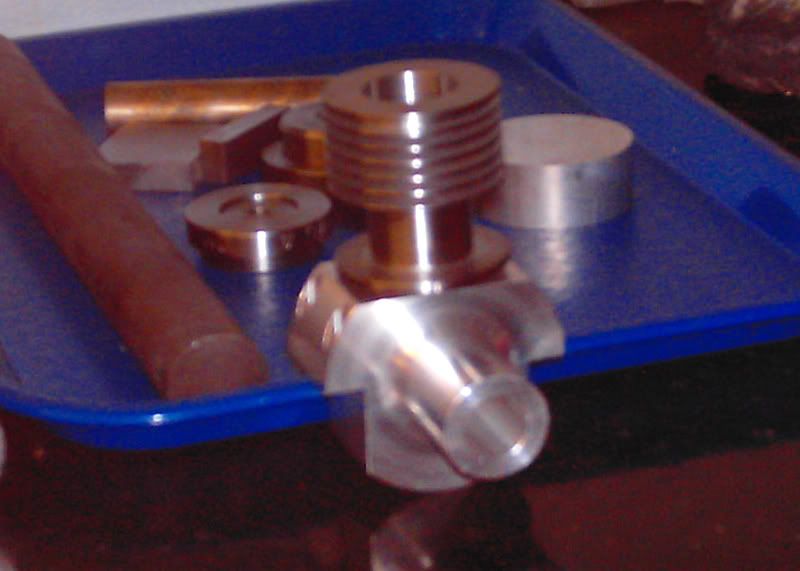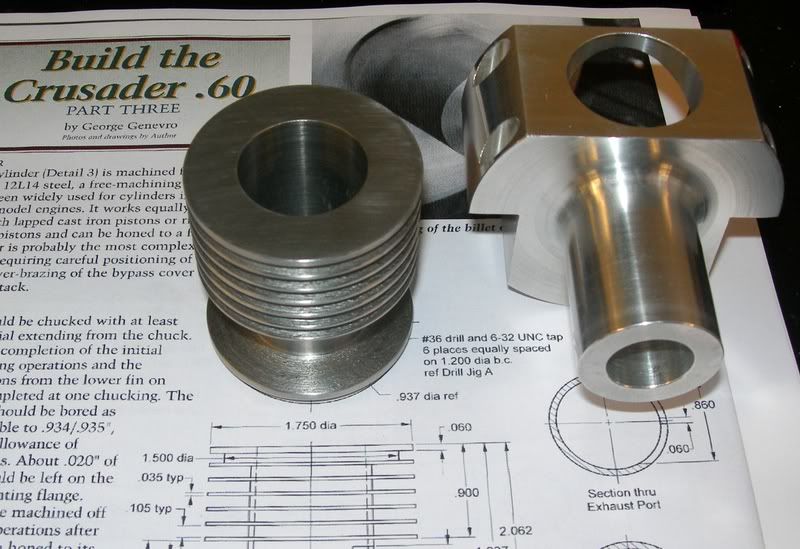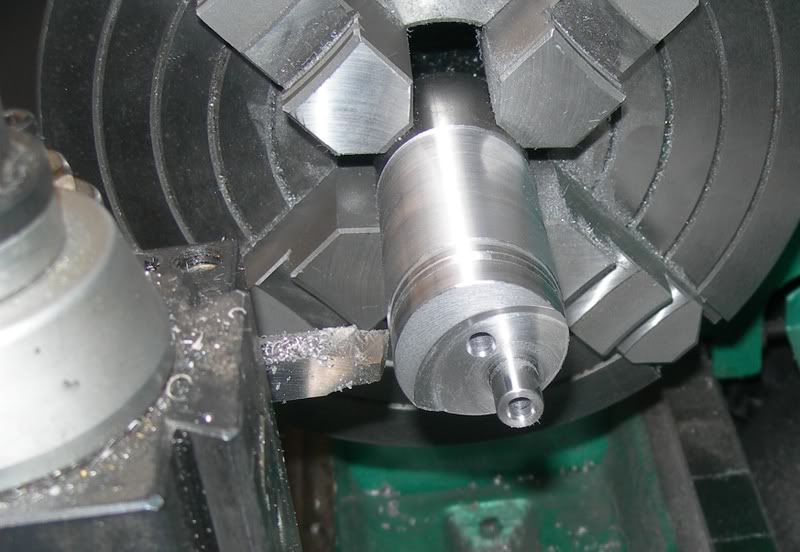Well, I have taken the plunge and started the Crusader .60 that Home Shop Machinist Magazine published (Jul-Aug 2005) . It is a two stroke engine similar to a model airplane engine. It is a glow plug engine that runs on model airplane fuel. The author (George Genevro) used quite a few jigs in order to construct this engine using aluminum and steel bar stock.
My initial plan of attack on this project was to fore-go some of the jigs in favor of speeding up the build some; however, having a young son who is tending to want to spend more and more time in the shop with me has made the case to go ahead and build the project basically as published in the article. By using all of the jigs and fixtures and building the project this way, when he gets a bit older, he can build one himself without having to mess with making the jigs. With the build article, this should make the project for him easy to follow and can feasibly have a successful engine with getting bored of making tons of jigs.
Adding to this project is a good personal friend of mine. He has an interest in machining, and is building himself the same engine at the same time. Along with his engine, he also is building a full set of jigs for later use with his son. He doesn't yet have any machinery, but is budgeting to get a small lathe and mill when he can. He comes over one night each week, and makes parts for the engine. On that night, I will work on whatever machine is available or just stay out of the way to enable him the ability to machine his parts. The goal is to finish up the engines simultaneously, but with him spending only one night each week on the project, that is going to prolong the builds.
At this point in time, my engine is sitting with a crankcase that is 90% complete, and several of the jigs have been machined and prepared for later use. The other engine has the crankcase sitting at about 70% complete, and also has several of the jigs machined as well. All of the raw materials have been located or purchased and are set aside for the two builds. There are a few tooling items and fasteners needed in order complete the project(s). Other than that, just some time on the shop floor is the component standing in the way of two running engines.
Now, I know the question will be asked... Pictures. At this point in time, there hasn't been any photographs taken of the project(s). That will soon change. All that needs to happen is me getting myself in gear and taking some pictures of the current pieces, and then taking more along the way. Hopefully I can get those posted tomorrow.
My initial plan of attack on this project was to fore-go some of the jigs in favor of speeding up the build some; however, having a young son who is tending to want to spend more and more time in the shop with me has made the case to go ahead and build the project basically as published in the article. By using all of the jigs and fixtures and building the project this way, when he gets a bit older, he can build one himself without having to mess with making the jigs. With the build article, this should make the project for him easy to follow and can feasibly have a successful engine with getting bored of making tons of jigs.
Adding to this project is a good personal friend of mine. He has an interest in machining, and is building himself the same engine at the same time. Along with his engine, he also is building a full set of jigs for later use with his son. He doesn't yet have any machinery, but is budgeting to get a small lathe and mill when he can. He comes over one night each week, and makes parts for the engine. On that night, I will work on whatever machine is available or just stay out of the way to enable him the ability to machine his parts. The goal is to finish up the engines simultaneously, but with him spending only one night each week on the project, that is going to prolong the builds.
At this point in time, my engine is sitting with a crankcase that is 90% complete, and several of the jigs have been machined and prepared for later use. The other engine has the crankcase sitting at about 70% complete, and also has several of the jigs machined as well. All of the raw materials have been located or purchased and are set aside for the two builds. There are a few tooling items and fasteners needed in order complete the project(s). Other than that, just some time on the shop floor is the component standing in the way of two running engines.
Now, I know the question will be asked... Pictures. At this point in time, there hasn't been any photographs taken of the project(s). That will soon change. All that needs to happen is me getting myself in gear and taking some pictures of the current pieces, and then taking more along the way. Hopefully I can get those posted tomorrow.





